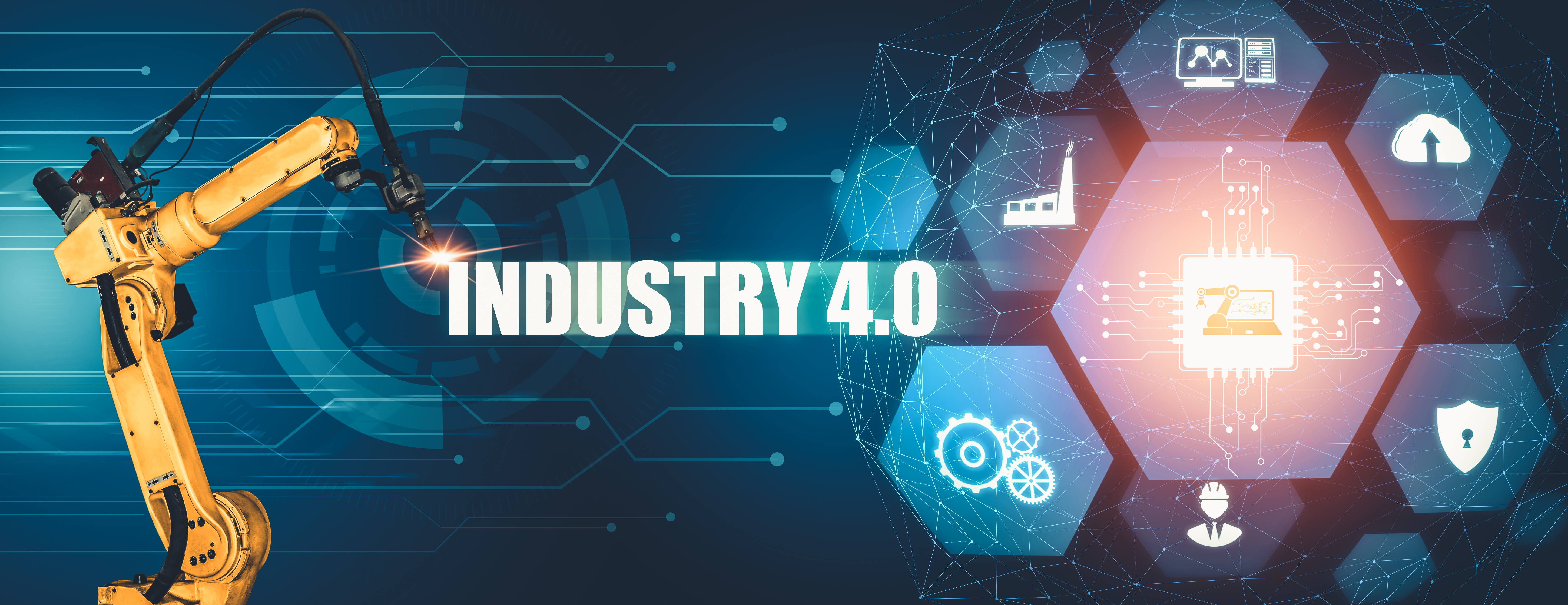Technologies of the Fourth Industrial Revolution
In this section of the website we introduce the Fourth Industrial Revolution and, in particular, the technologies that comprise it, drive and develop it. Over the coming months and years we will continue to develop this section, in particular we will include: examples of the various technologies in action; links to ACP supporting companies that utilise these technologies and the jobs involved; answers to frequently asked questions; potential developments from 2030 to 2050; links to our ‘Articles of Interest’ that go into more detail concerning each technology and its uses; and other relevant information and links as they arise such as comments by individuals within the aerospace industry employing those technologies.
But first, what is the fourth industrial revolution, and what were the first, second and third? And for that matter, is there the beginning of a fifth revolution?
The Fourth Industrial Revolution (IR 4.0)
The Fourth Industrial Revolution (4IR), also known as Industry 4.0, refers to a new era of development where digital, physical, and biological systems converge, fundamentally transforming industries, economies, and societies. Coined in 2016 by Klaus Schwab, Founder and Executive Chairman of the World Economic Forum (WEF), 4IR is characterized by the convergence and complementarity of emerging technology domains, including nanotechnology, biotechnology, new materials, and advanced digital production technologies. This wave of change in the manufacturing sector began in the mid-2010s and holds significant potential for operations and the future of production. Key components of Industry 4.0 include:
Connectivity, Data, and Computational Power
Analytics and Intelligence
However, technology alone is not enough. To thrive in the Fourth Industrial Revolution, companies must ensure that their workers are properly equipped through upskilling and reskilling. Upskilling involves employees learning new skills to adapt to evolving job requirements, while reskilling involves retraining workers with new skills that enable them to fill different positions within their companies. The outlook on reskilling varies geographically, but it remains crucial as disruptive technologies continue to transform job requirements.
4IR and the Aerospace Industry
Aerospace & Defense 4.0 refers to the application of Industry 4.0 technologies within the aerospace and defense (A&D) industry. The objectives of Aerospace & Defense 4.0 include: developing new cost-effective products and services; enhancing existing products by making them smarter using sensors and connectivity; leveraging advanced manufacturing processes like additive manufacturing (3D printing).
Challenges and Opportunities
While 84% of A&D executives recognize the importance of digital technologies for market differentiation, only a quarter of A&D companies currently use these technologies effectively. Challenges include designing new products and business models, with new delivery models being a top concern. A&D companies should prioritize Industry 4.0 across their entire enterprise to stay competitive in today’s digital era.
In summary, Aerospace & Defense 4.0 aims to transform the A&D industry through technology adoption, innovation, and digital transformation.
The Fifth Industrial Revolution (IR 5.0)
This Revolution, also known as Industry 5.0, represents a new and emerging phase of industrialization. Here are the key points:
Human-Technology Collaboration
Industry 5.0 envisions humans working alongside advanced technology and A.I.-powered robots. Rather than replacing humans, these technologies enhance workplace processes by augmenting human capabilities.
Human-Centric Focus
Unlike previous industrial revolutions, Industry 5.0 places a stronger emphasis on human well-being. It aims to create a harmonious balance between technology and people, ensuring that technological advancements benefit humanity as a whole.
Resilience and Sustainability
Industry 5.0 seeks to improve resilience in the face of challenges (such as pandemics or supply chain disruptions) while also promoting sustainability. This includes sustainable practices, waste reduction, and environmental consciousness.
Integration of Technologies
The Fifth Industrial Revolution involves the fusion of various technologies, including:
- Artificial Intelligence (AI): Enhancing decision-making and automation.
- Robotics: Collaborative robots (cobots) working alongside humans.
- Internet of Things (IoT): Connecting devices and systems.
- Biotechnology: Advancements in healthcare and life sciences.
- Renewable Energy: Transitioning to cleaner energy sources.
Ethical Business Models
Industry 5.0 encourages ethical business practices. It’s not just about profit; purpose-driven approaches are essential. Companies must consider environmental impact, social responsibility, and governance (ESG) to create a positive impact on society.
In summary, the Fifth Industrial Revolution aims to combine technological progress with human values, resilience, and sustainability. It’s an exciting era that challenges us to create a better future for all.

